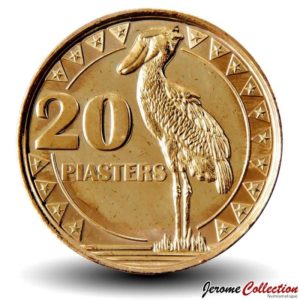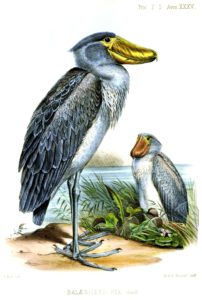Cet article a été réalisé dans le cadre d’un cours d’anglais avec Mme Servan sur l’activisme en ligne. Par binôme, nous devions sélectionner une cause à défendre, le choix du support était libre. Nous avons privilégié le site internet du lycée pour toucher un maximum de personnes. Notre préférence s’est portée sur le bec en sabot du Nil car nous voulions mettre en avant un animal moins connu parmi ceux en voie de disparition. Quand nous pensons aux animaux en voie de disparition nous pensons à un animal mignon et beau mais moins à ceux un peu plus atypiques.
This article was produced as part of an English course with Ms. Servan on online activism. In pairs, we had to choose a cause to defend and how to defend it. We have chosen the high school website because a lot of people visit it. Our cause is the Nile’s Shoebill Stork because we wanted to highlight a little known animal among endangered species. In fact, when we talk about endangered animals, the cutest and most famous ones directly come to mind. It was important for us to highlight a lesser known and more atypical species.
Le bec en sabot du Nil
Le bec en sabot du Nil est un oiseau qui vit dans les marécages difficiles d’accès du sud du Soudan. Il mesure environ entre 1 et 1,20 mètre et pèse de 4 à 7 kg. En apparence, il a un bec de pélican et un regard d’aigle. Cet oiseau peut vivre jusqu’à 36 ans. Il est très rapide et se nourrit essentiellement de poisson. Le bec en sabot du Nil est un oiseau solitaire qui descend des dinosaures.
Son espèce est menacée par la destruction de son habitat naturel, les marécages sont souvent asséchés pour être transformés en terre agricole et sont également menacés par les incendies et les inondations.
Le Parc Pairi-Daiza en Belgique est le premier parc au monde à avoir réussi à reproduire le bec en sabot du Nil, le 19 juillet 2008.
The Shoebill Stork
The Shoebill Stork is a bird which lives in remote swamps in southern Sudan. Its height range is between 110 and 140 cm and it weighs from 4 to 7 kg. In appearance it has a pelican beak and an eagle look. The shoebill stork can live up to 36 years. It is really fast and its beak is hooked. It mostly eats fish. It’s a lonely bird that descends from dinosaurs.
This species is endangered due to the destruction of its habitat, which is often dried up to be transformed into agricultural land. Its habitat is also threatened by fire and flooding.
The Pairi-Daiza Park, in Belgium, is the first park in the world to have succeeded in hatching two chicks : Abou and Marqoub, on July 19, 2008.







